There is no facile answer here – I just do. There is a feeling you get when you set your sails just right, anticipatIng a puff a wind, and your boat accelerates under you, that, just… wow. There is nothing like it. Despite how personal this love is for me, I’ll try to capture a bit the ‘why’ of it here.
So, specifically, what is it about sailing that appeals to me?
It’s the complexity of it, I think. You can spend your entire life learning how to sail. I don’t know of anyone who claims to have mastered sailing: not day-sailing shlubs like me, and not world champion skippers like Spithill. There is always something to improve, some bit of delight waiting to reward you for a tweak done right.
What makes it so compelling, though, is that despite its the depth of the challenge, sailing is is pretty easy to get into – it’s easier to learn the basics of sailing than it is to learn snow-boarding. Give someone the helm, and some instruction, and by the end of their first hour they’ll get the hang of it – and then spend the rest of their lives getting better at it.
To understand why sailing is so complex, it is useful to compare it to something familiar, like driving. When you are driving a car, you only have 3 things you have to control: the steering wheel, the accelerator, and the brakes. Thats it. If you are a performance driver, you start thinking about how quickly or slowly you change those controls, but non-racing cars have what I’ll call ‘3 degrees of freedom’ (if you follow your Dad’s advice and never brake and accelerate at the same time, then it’s just two).
Twenty Degrees of Freedom
By contrast, sailboats have twenty (20!) degrees of freedom , all of which a skipper can tweak at any given time to make the boat do what he or she wants it to do. Let’s count ‘em, shall we?
The front sail, called a Jib or Genoa, is controlled by ropes called different things depending on what they do: jib sheets, jib halyard tension, jib car, and luff tension – these together control the shape and position of the foresail. That’s 4 right there.
The rear sail, called the Mainsail, is controlled by similar lines: sheet, halyard, luff tension, and outhaul. It also has a traveller for finer control over position, and a boom vang for finer control over the mainsails shape, and a cunningham for dynamic control over foot tension. That’s another 7.
Then we have the backstay tensioner, that controls the bend in your mast. Finally, you have the helm (the steering wheel) – that brings the total up to 13.
On top of that, you frequently have to adjust the size of your sails: that is another 3 lines (jib furling line, and two mainsail reefing lines). 15!
If you fly a spinnaker (those colorful sails that look like balloony kites), you get to control another 3 degrees of freedom, too (plus the freedom of using it or not). Grand total? 20.
Plus the engine and the bow thruster, but lets not even go there.
But wait, there’s more
Those 20 controls (many are per side, so that translates to 24 ropes) are just the beginning. When you’re sailing, everything is changing around you, all the time. Wind varies every second, and is different between the top of you mast and the bottom. Other boats pass by, changing the wind direction too. Currents mess with you, and every wave wants to throw you a bit off coarse. When winds puff, your boat heels (leans over) changing the dynamics of everything.
The two sails you usually see on a boat are only a part of the story: boats sail beneath the water as well – the keel and rudder act as ‘sails’ underwater, and are what keep you from just drifting along with the wind. Making matters more complicated, how they act depends on how fast you’re going through the water, so you have to change your strategy as you speed up. The wind changes too: as you go faster, the wind shifts forward, and you again have to adjust everything.
There Are No Lanes
Watch any chaotic harbor for a while, and you’ll start to notice patterns. It turns out not to be chaos, just complex behavior. Sailboats have limitations in terms of what directions that can go in – because they can’t point straight into the wind, they have to ‘tack’ upwind (heading about 45 degrees upwind, then turning 90 degrees so that the wind is now 45 degrees off the other side). When there are dozens of sailboats all doing this, and dozens of others heading straight downwind, you need rules, and boy, there are a lot of ‘em.
If there is a regatta (a boat race) happening, you go a bit beyond the rules – yes, you may have the right of way, but you don’t want to ruin someone’s race by forcing the change directions. San Diego is regatta central – during non-covid years, you can expect to sail through one 2-3 weekends a month.
So, besides the 20 degrees of freedom we discussed above, a captain has to figure out where they want their boat to go, plan a series of tacks to get there, and execute those turns at the right time, all the while keeping the ‘rules of the road’ in mind. It is normal to keep a dozen boats on your ‘mental map’, judging if you are on a collision course, and if so, what to do. Some of the rules tell you which boat has the right of way when your courses overlap, and 90% of sailors know and follow those rules – it’s the remaining 10% that keep you on your toes. One of my favorite ‘boating moments’ happen when two sailboats cross paths with a dozen yards of each other, each sailing as hard as they can, and the captain’s eyes meet- that “I see you, I know what I’m doing, I see you know what you’re doing too” look feels great.
Captains Are Busy
To recap: the skipper is sitting at the helm, keeping an eye on all this, and the shape of the sails, and oblivous jetskiers, and clumps of kelp intent on tangling around keel. All while spinning yarns for their guests, listening to the coast guard on VHF, and snacking on chips and salsa.
It’s friggin’ wonderful.
Sailing is the Deepest Sport
This deserves a whole post, so I’ll just mention it briefly here: in my opinion, there is no sport deeper and more varied than sailing. You can race everything from windsurfers to massive yachts. The round-the-world series are insane: some are massively funded superteams circling the world in carbon fiber $200m dollar torture machines during the most challenging weather they can find (better wind!), some are solo, non-stop races, which test your mind and body as well as your skill. Ain’t nothing deeper than sailing sport. I like F1, but the Volvo Ocean Race makes it look like a day at the cart track.
Do I love this stuff?
For some, the challenge, complexity, and occasional pucker-inducing wind gust or near miss with another boat would all be turn offs, but for me? Pure joy.
So, do I love this stuff? Yeah, you could say I do.

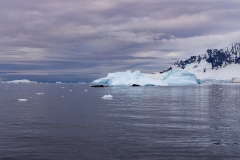
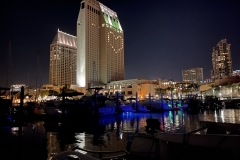
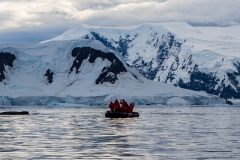


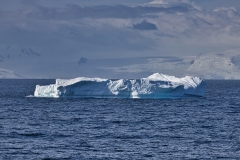
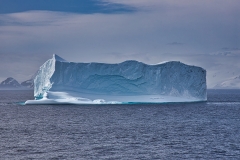

Leave a Reply